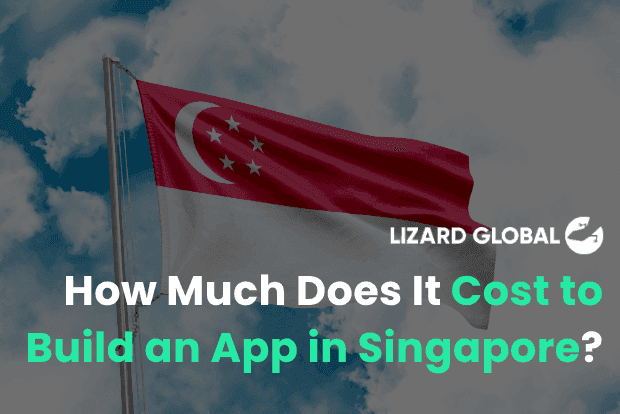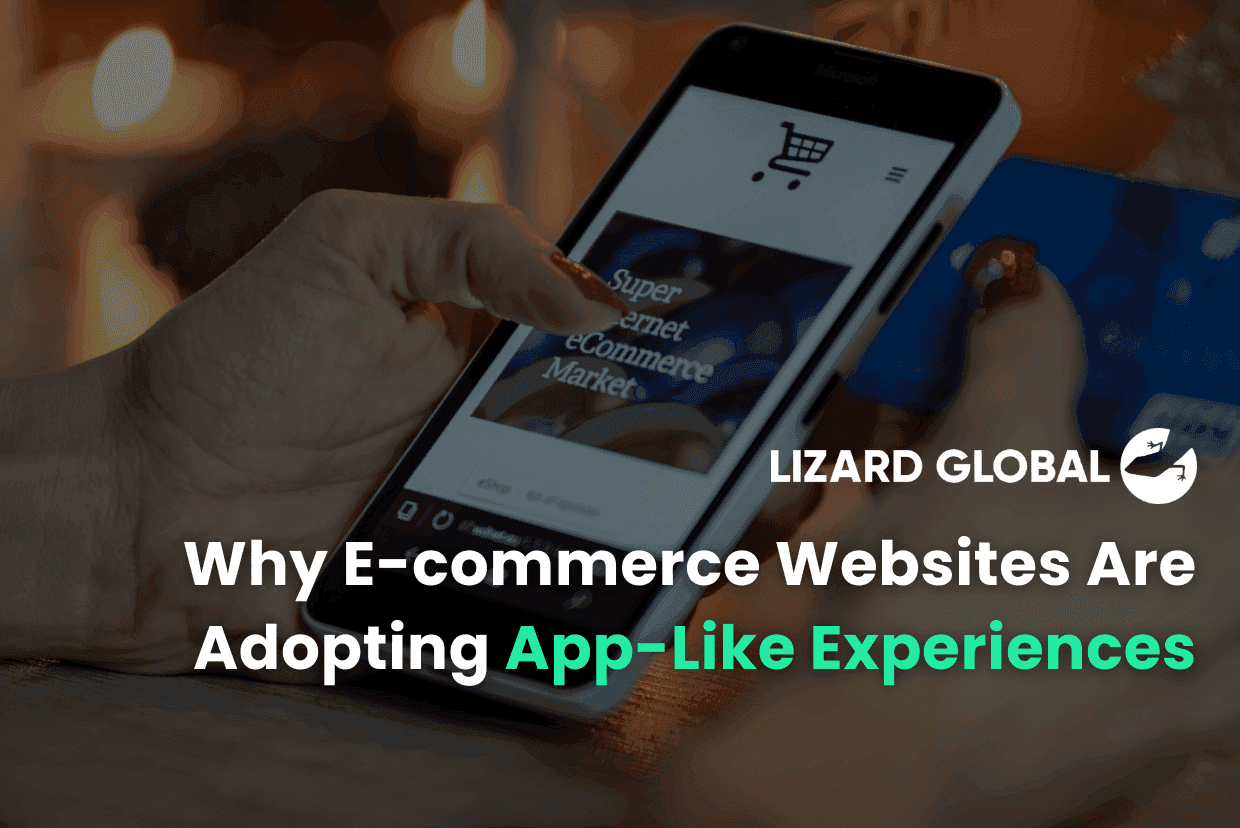Software Development
Digital Transformation
+ 4 more ...
How Much Does It Cost To Develop An eCommerce Platform?

08 May 2025
by Nadiy, Senior Content Writer

08 May 2025
by Nadiy, Senior Content Writer
Software Development
Digital Transformation
App Development Cost
Scalability
Mobile App Development
Web App Development
How Much Does It Cost To Develop An eCommerce Platform?
Table of contents
Contact us
We will get back to you in the next 48 hours.
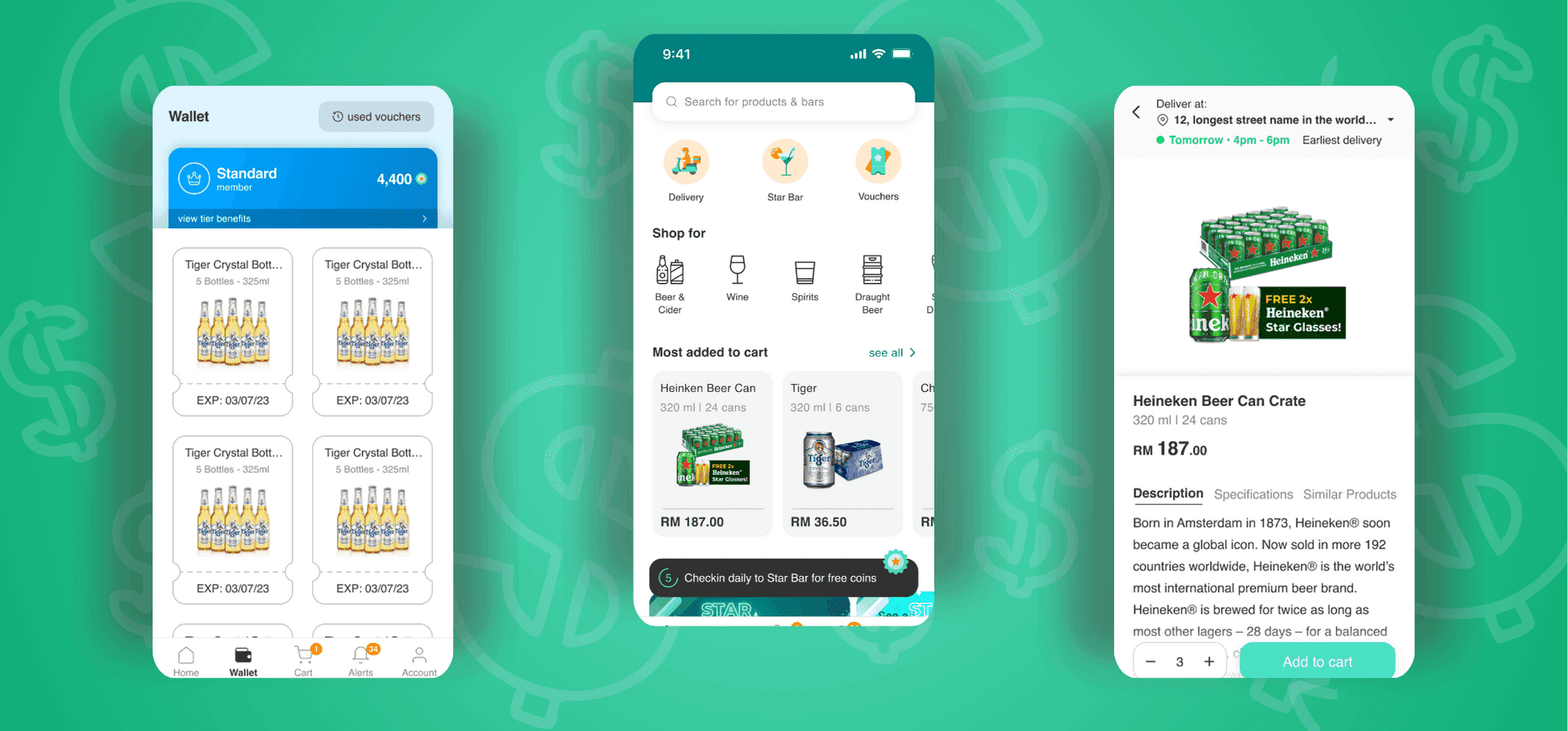
How Much Does It Cost To Develop An eCommerce Platform in 2025 A Comprehensive Guide
Thinking about launching an online store? Discover the real cost of eCommerce platform development—broken down by features, complexity, and business needs. Learn what affects your budget and how Lizard Global can help build a scalable, secure, and future-proof solution.
key takeaways
Imagine launching a sleek, high-performing online store that attracts customers, drives sales, and scales effortlessly with your business. Sounds like a dream, right? But turning that dream into a reality starts with a single pressing question: How much does it cost to develop an eCommerce platform?
Whether you're a startup testing the waters or an established brand ready to digitalize your retail experience, understanding the true cost of eCommerce development is crucial. The investment goes far beyond basic web design—think strategy, scalability, integrations, and long-term support.
In this blog, we break down the cost of eCommerce platform development, what influences it, and how to make the most of your budget with the right development partner.
What Factors Influence the Cost of eCommerce Platform Development?
Building an eCommerce platform is not a one-size-fits-all endeavor. The cost varies significantly based on the type of platform, required functionality, integrations, and long-term goals. From a simple product catalog to a fully custom, AI-powered marketplace, your choices will shape your budget.
Several elements impact the cost of developing an eCommerce platform. Let’s dive into the key factors:
1. Type of eCommerce Platform
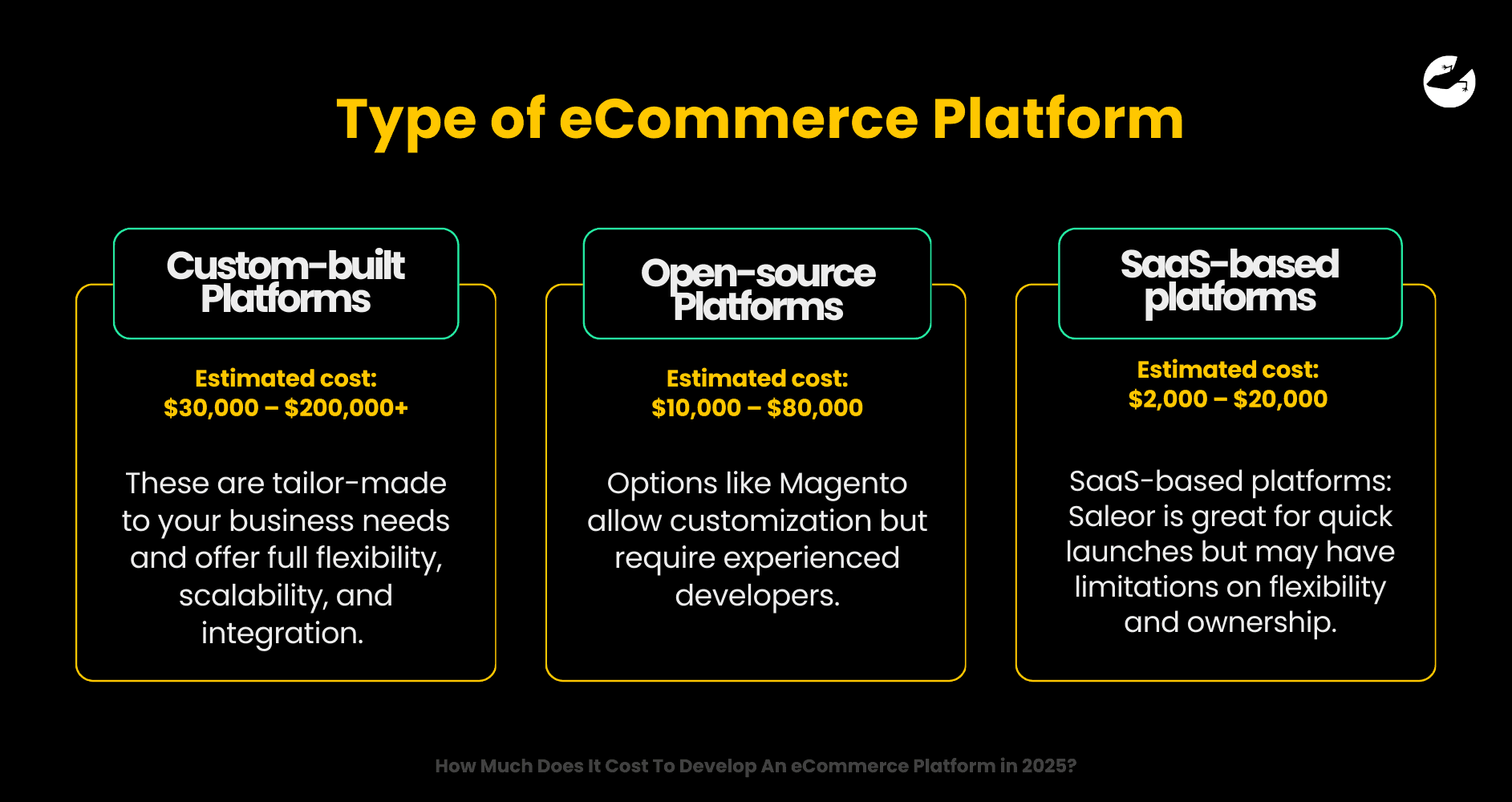
- Custom-built platforms: These are tailor-made to your business needs and offer full flexibility, scalability, and integration. Perfect for complex operations or unique business models.
Estimated cost: $30,000 – $200,000+
- Open-source platforms: Options like Magento allow customization but require experienced developers.
Estimated cost: $10,000 – $80,000
- SaaS-based platforms: Saleor is great for quick launches but may have limitations on flexibility and ownership.
Estimated cost: $2,000 – $20,000 (initial setup)
For example, launching a basic Saleor-powered store for a boutique might cost just a few thousand dollars, while building a custom enterprise-level marketplace like Zalando or ASOS could run into hundreds of thousands.
2. Design Complexity and UI/UX
Your platform’s design is the digital face of your brand. It influences not only how your brand is perceived but also how users interact with it. A seamless, intuitive user experience (UX) backed by compelling visual design (UI) increases conversions—and development cost.
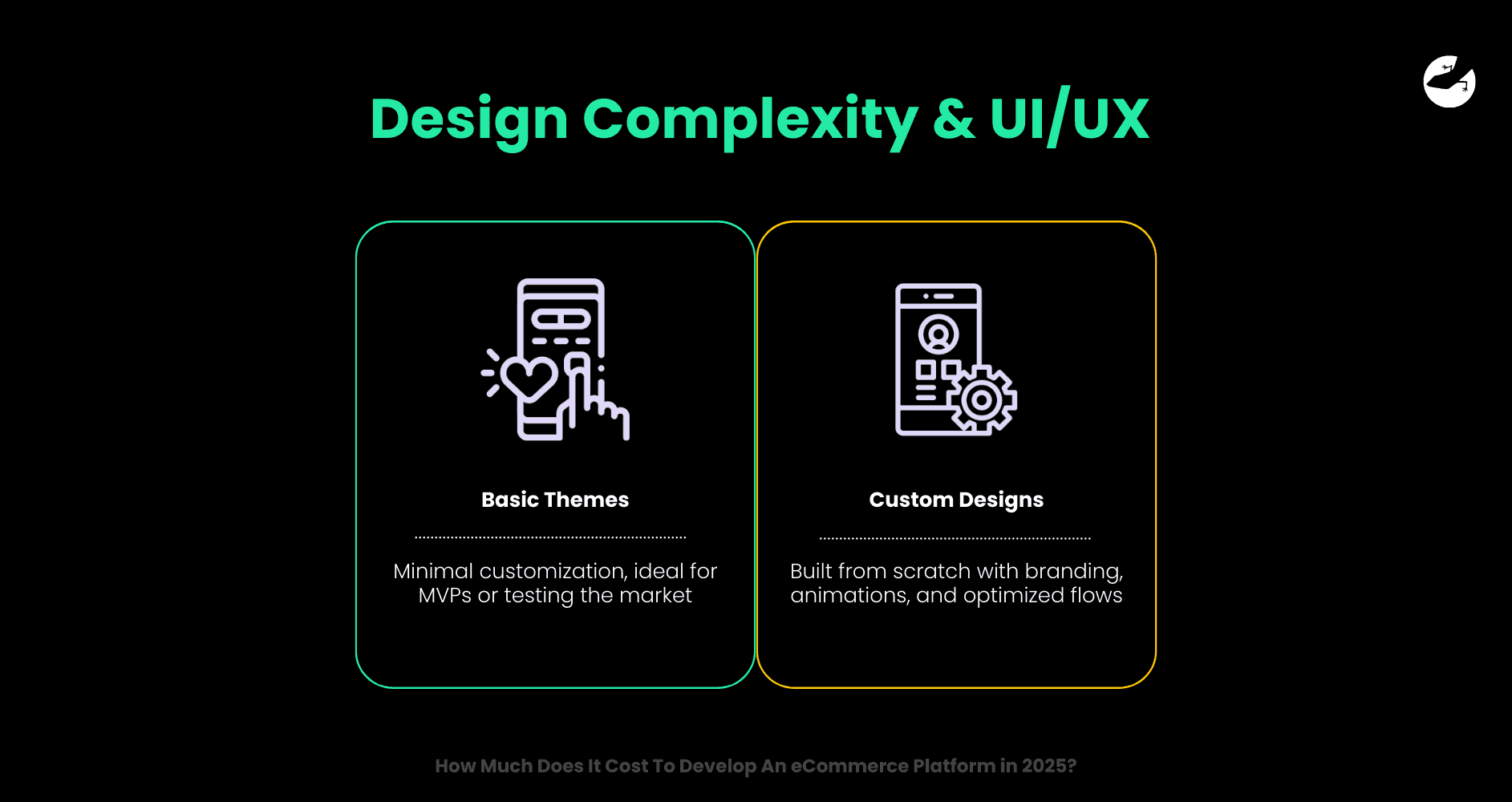
Designing a custom interface involves wireframing, prototyping, user testing, and responsiveness across devices. Costs increase when your brand requires highly tailored visuals, animations, or complex user journeys.
A well-designed interface with smooth navigation directly influences conversion rates. The more customized the design, the higher the cost.
- Basic themes: Minimal customization, ideal for MVPs or testing the market.
- Custom design: Built from scratch with branding, animations, and optimized flows.
Estimated cost: $5,000 – $50,000
For example, Nike's online store is a great case of top-tier UI and UX. Their site features micro-interactions, dynamic product displays, and localized interfaces—all of which require advanced front-end development and testing.
3. Features and Functionalities
The heart of your eCommerce platform lies in what it can do. The more functionality you require, the more time and expertise it takes to build and maintain—directly affecting your development budget.
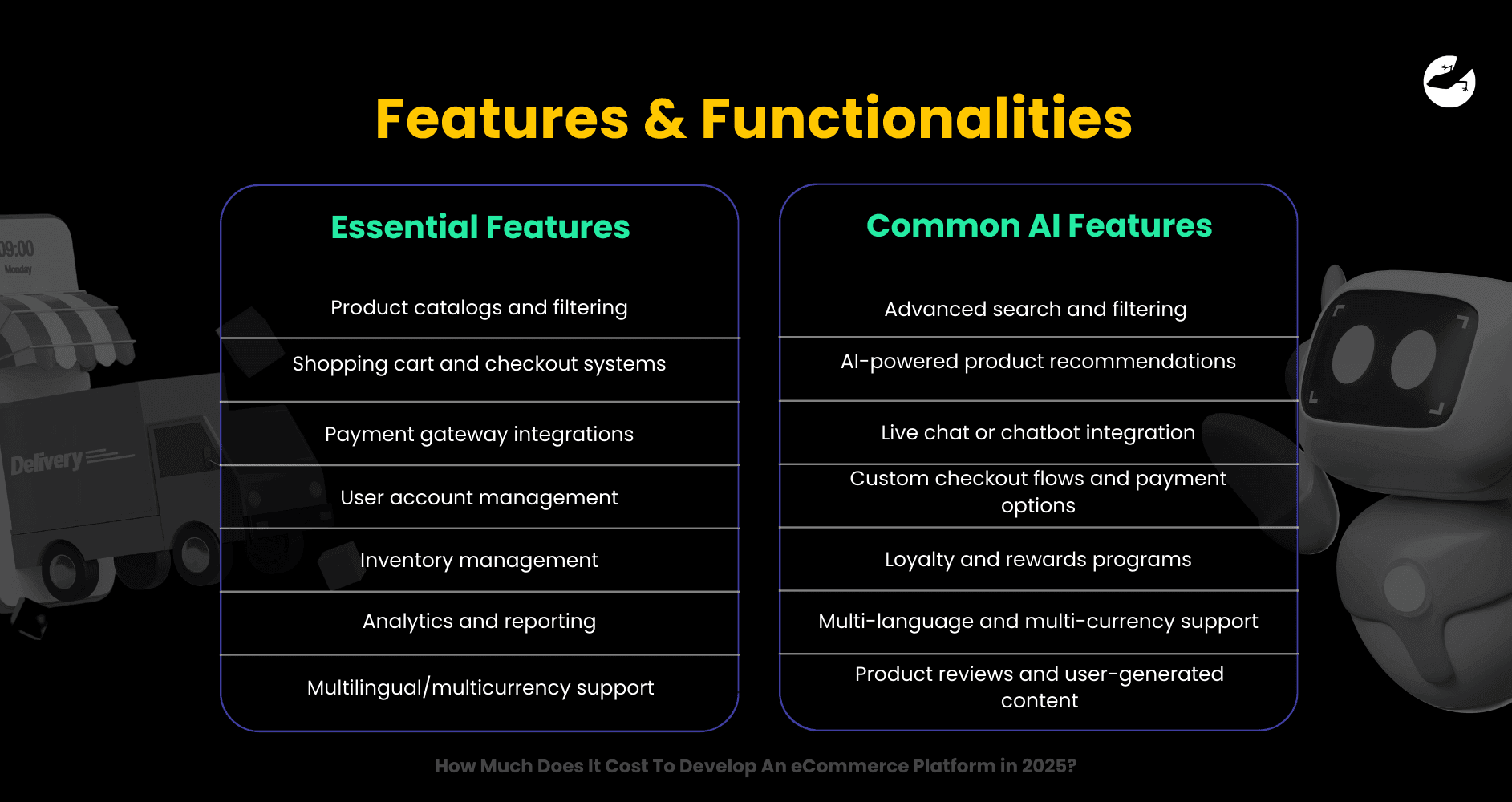
Essential features like shopping carts, product filters, and payment gateways are just the start. Advanced features such as dynamic pricing, AI recommendations, product bundling, or subscription models add both value and cost.
The functionality you include will drastically influence the final budget. Some common (and essential) features are:
- Product catalogs and filtering
- Shopping cart and checkout systems
- Payment gateway integrations
- User account management
- Inventory management
- Analytics and reporting
- Multilingual/multicurrency support
More advanced features like AI-powered recommendations, live chat, loyalty programs, or headless commerce architectures add to the cost.
- Basic feature set: $10,000 – $30,000
Advanced functionalities cost: $50,000 – $150,000+
Common AI Features That Impact Cost:
- Advanced search and filtering (faceted search)
- AI-powered product recommendations
- Live chat or chatbot integration
- Custom checkout flows and payment options
- Loyalty and rewards programs
- Multi-language and multi-currency support
- Product reviews and user-generated content
A good example is Amazon, which uses machine learning to deliver personalized product recommendations, real-time inventory updates, and predictive shipping—features that require complex back-end logic, data infrastructure, and APIs.
4. Backend Infrastructure and Scalability
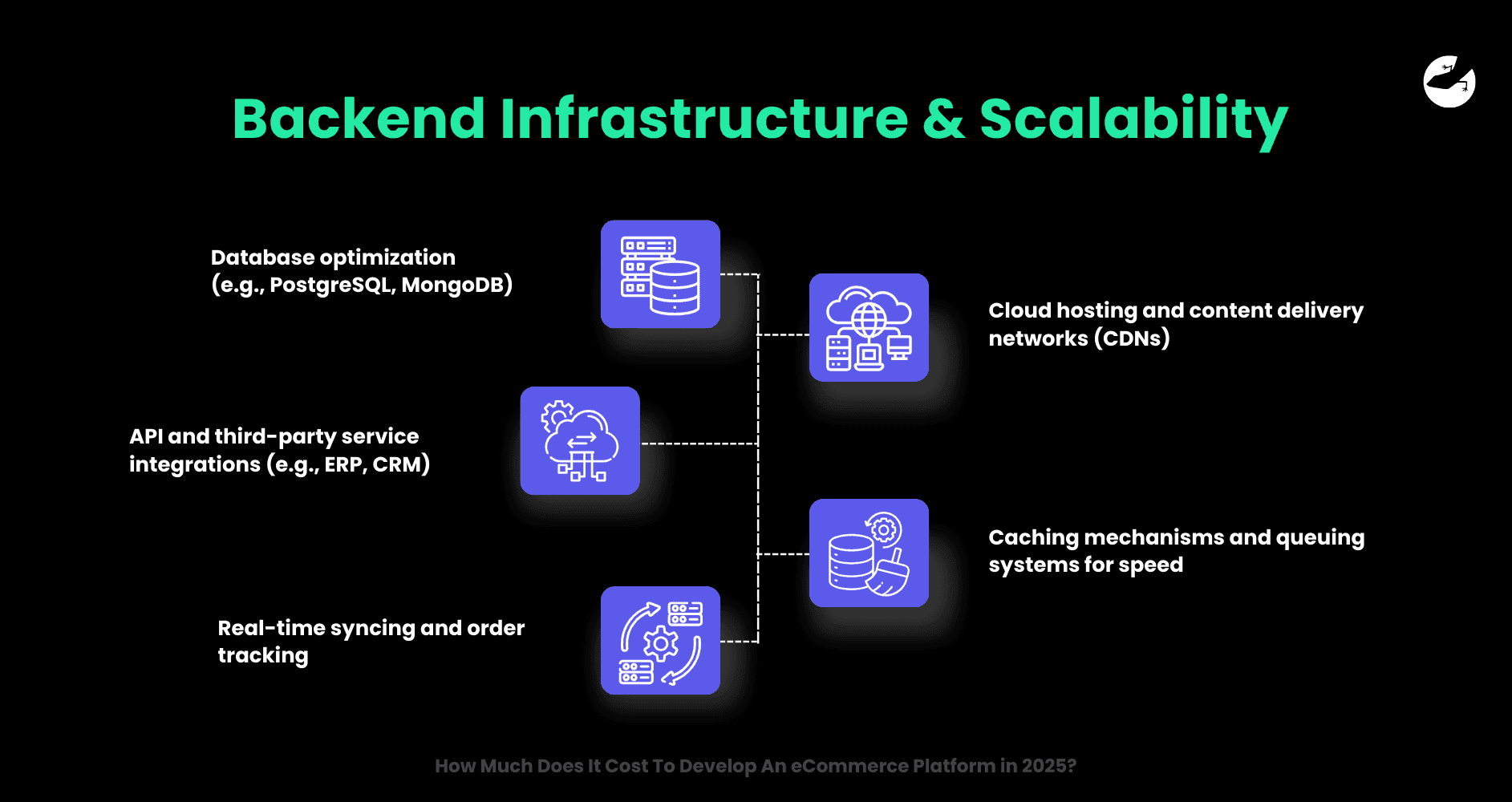
Your eCommerce backend is where the heavy lifting happens—managing products, users, orders, and data. A strong, scalable backend ensures your site performs well even under high traffic and future growth.
If you’re starting small, a basic database and single-server setup might suffice. But if you’re planning to grow or handle high volumes of transactions (e.g. Black Friday sales), you'll need a scalable infrastructure—possibly powered by AWS, Google Cloud, or Azure—with microservices, containerization (like Docker), and load balancing.
Your platform’s backend must support seamless performance as you scale. This includes:
- Database optimization (e.g., PostgreSQL, MongoDB)
- API and third-party service integrations (e.g., ERP, CRM)
- Real-time syncing and order tracking
- Cloud hosting and content delivery networks (CDNs)
- Caching mechanisms and queuing systems for speed
Estimated cost: $15,000 – $100,000+
An example is Saleor, which offers scalable backend infrastructure built on modern architecture, enabling high-growth brands to handle traffic spikes and flash sales with speed and stability.
5. Mobile Responsiveness and App Integration
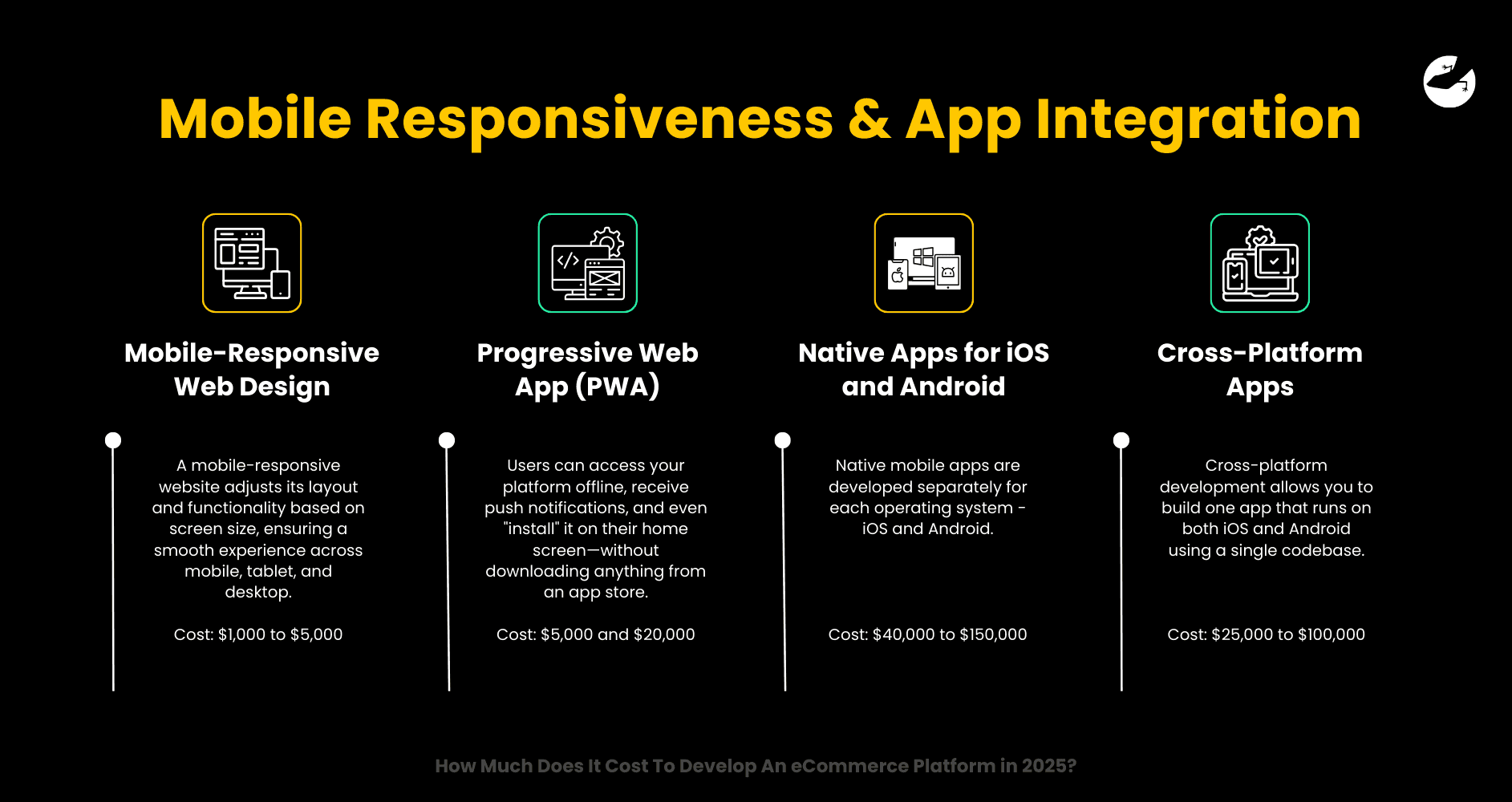
Over 60% of eCommerce traffic comes from mobile devices. Ensuring a responsive, optimized mobile experience—or building a dedicated mobile app—can make or break your sales funnel.
Responsive design is now expected, but a mobile-first approach or app integration (native or cross-platform) increases development costs. If your business model benefits from on-the-go usage—like Zalora’s fashion shopping app—you might consider building a standalone mobile app for iOS and Android.
Features like push notifications, one-tap checkout, and offline browsing offer significant user value but require additional development and quality assurance QA time.
Most users browse and shop on mobile devices. Optimizing for mobile or building a dedicated mobile app boosts engagement and conversions.
- Mobile-Responsive Web Design
This is the most basic and essential mobile solution. A mobile-responsive website adjusts its layout and functionality based on screen size, ensuring a smooth experience across mobile, tablet, and desktop. It’s typically the most cost-effective option, with estimated costs ranging from $1,000 to $5,000, depending on your site’s complexity and the design approach.
- Progressive Web App (PWA)
A PWA delivers an app-like experience through a standard mobile browser. Users can access your platform offline, receive push notifications, and even "install" it on their home screen—without downloading anything from an app store. PWAs offer great value for mid-tier eCommerce platforms, with costs usually falling between $5,000 and $20,000.
- Native Apps for iOS and Android
Native mobile apps are developed separately for each operating system—using Swift for iOS and Kotlin for Android. These apps provide the best performance, access to all device features (like camera, GPS, biometrics), and a premium user experience. However, they require double the development effort, with typical costs ranging from $40,000 to $150,000 or more, especially for complex eCommerce features.
- Cross-Platform Apps (Flutter or React Native)
Cross-platform development allows you to build one app that runs on both iOS and Android using a single codebase. Tools like Flutter or React Native can significantly reduce development time and costs while still offering excellent performance. This approach is ideal for businesses seeking faster time-to-market, with estimated costs from $25,000 to $100,000.
6. Security and Compliance
Security is a non-negotiable component of eCommerce development. With sensitive data like customer addresses and payment info being exchanged, compliance and protection measures are essential—not optional.
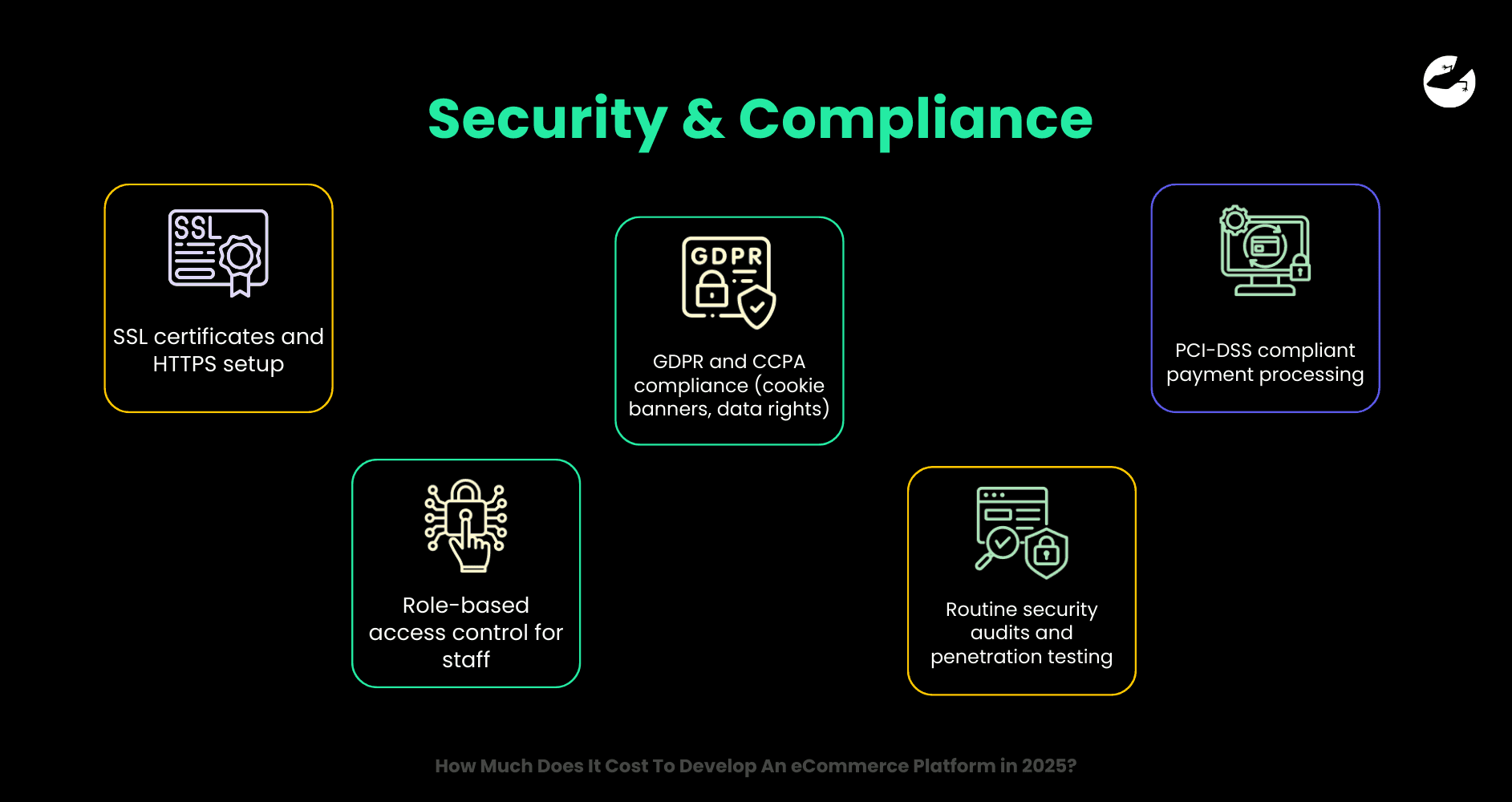
Ensuring GDPR, PDPA, PCI-DSS, and local privacy laws compliance is critical. You'll also need SSL encryption, data anonymization, and secure payment integration. High-risk businesses (like those handling recurring billing or cross-border sales) may need tokenization, multi-factor authentication (MFA), and fraud detection systems.
That Impact Cost:
- SSL certificates and HTTPS setup
- GDPR and CCPA compliance (cookie banners, data rights)
- PCI-DSS compliant payment processing
- Role-based access control for staff
- Routine security audits and penetration testing
Estimated cost: $5,000 – $20,000+
Think of Stripe and PayPal integrations—they handle the complexity of compliance and fraud detection but require skilled implementation and testing.
7. Ongoing Maintenance and Support
Launching your eCommerce platform is just the beginning. Continuous maintenance ensures your platform stays secure, performs well, and evolves with market demands.
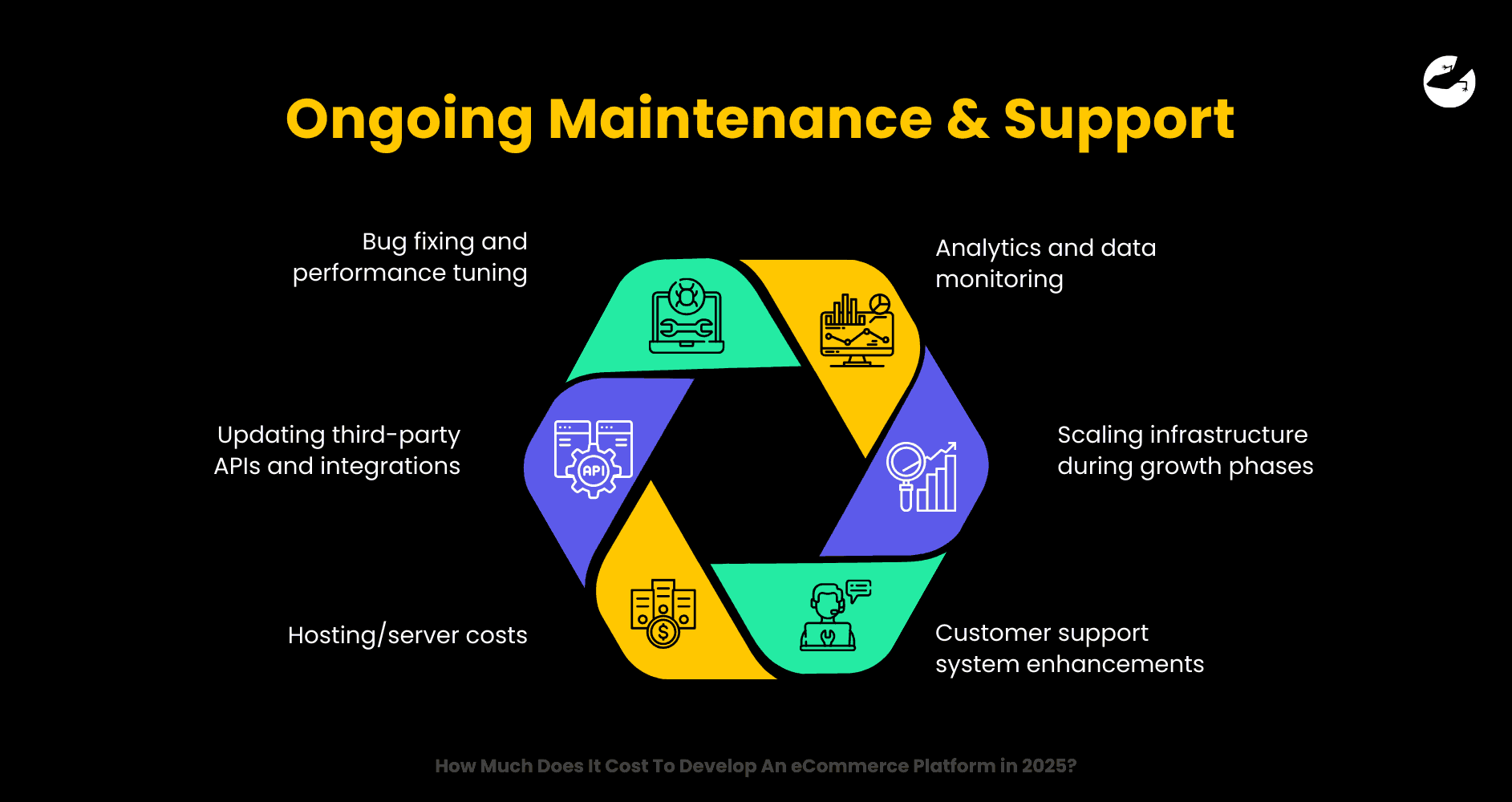
Bugs need fixing, servers require monitoring, and new features need rolling out. Most eCommerce platforms also require periodic updates for dependencies, security patches, and third-party services.
Maintenance Tasks That Add Up:
- Bug fixing and performance tuning
- Updating third-party APIs and integrations
- Hosting/server costs
- Analytics and data monitoring
- Scaling infrastructure during growth phases
- Customer support system enhancements
Monthly maintenance cost: $1,000 – $10,000 depending on complexity
Saleor merchants
, for instance, benefit from a modern, API-first architecture that allows for streamlined updates and integrations. However, custom-built implementations still require proactive maintenance—especially as your product catalog expands or your user base scales.
Want to find out how much it costs to build your dream app or web app?
How Can You Optimize Your Budget Without Sacrificing Quality?
Not every project needs a massive investment from day one. There are smart ways to manage costs while still building a reliable, conversion-optimized eCommerce platform.
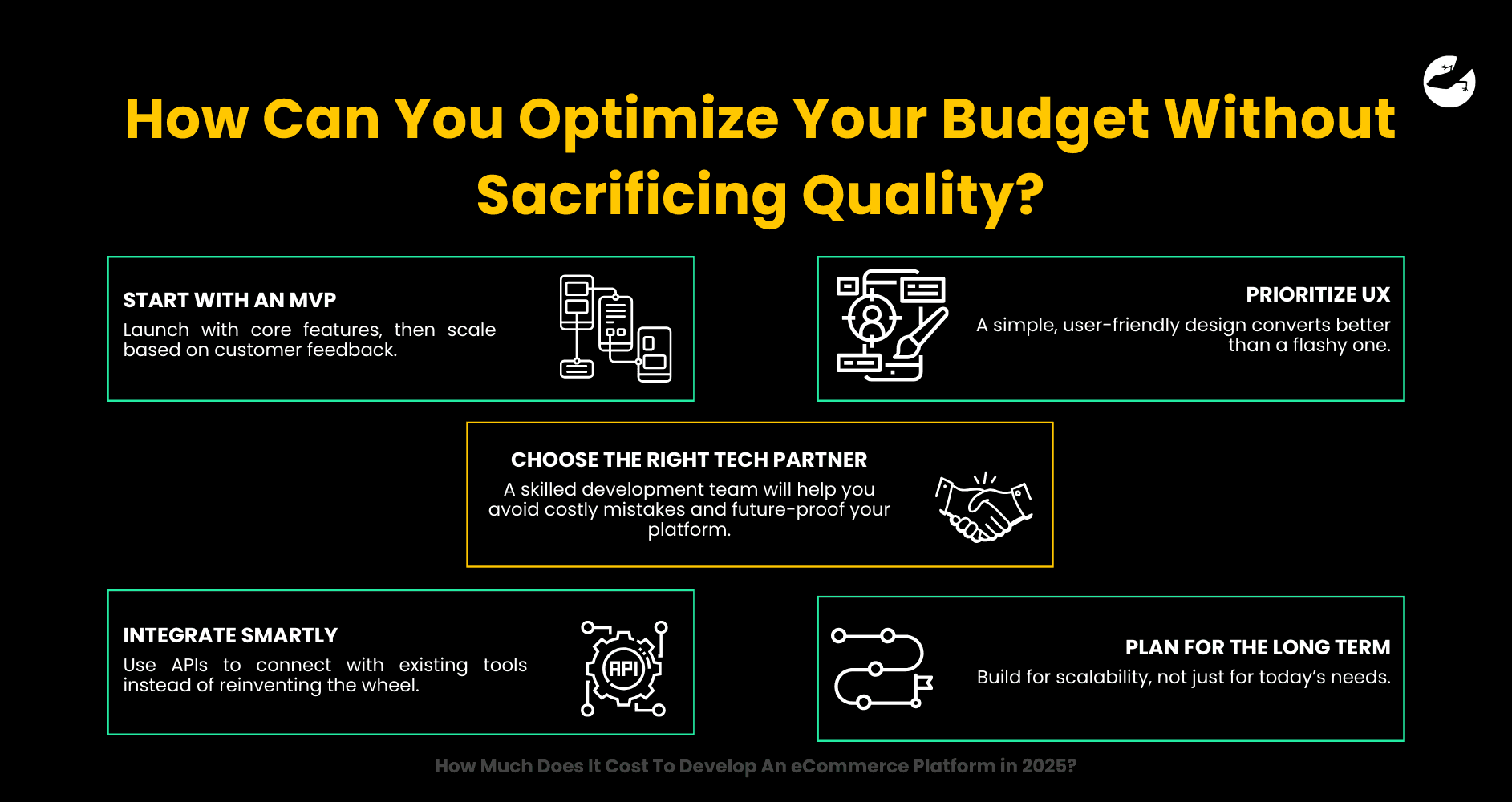
Start by defining a clear Minimum Viable Product (MVP)—focus on core features that meet user needs and validate your business idea. Avoid overbuilding, and instead plan for future iterations using user feedback. Work with a development partner that practices agile methodology, so you can adjust and prioritize based on performance data.
- Start with an MVP: Launch with core features, then scale based on customer feedback.
- Prioritize UX: A simple, user-friendly design converts better than a flashy one.
- Choose the right tech partner: A skilled development team will help you avoid costly mistakes and future-proof your platform.
- Integrate smartly: Use APIs to connect with existing tools instead of reinventing the wheel.
- Plan for the long term: Build for scalability, not just for today’s needs.
A great example is Drinkies, developed by Lizard Global, which launched its eCommerce MVP with a simple product line and grew based on customer feedback—keeping development lean while maintaining quality.
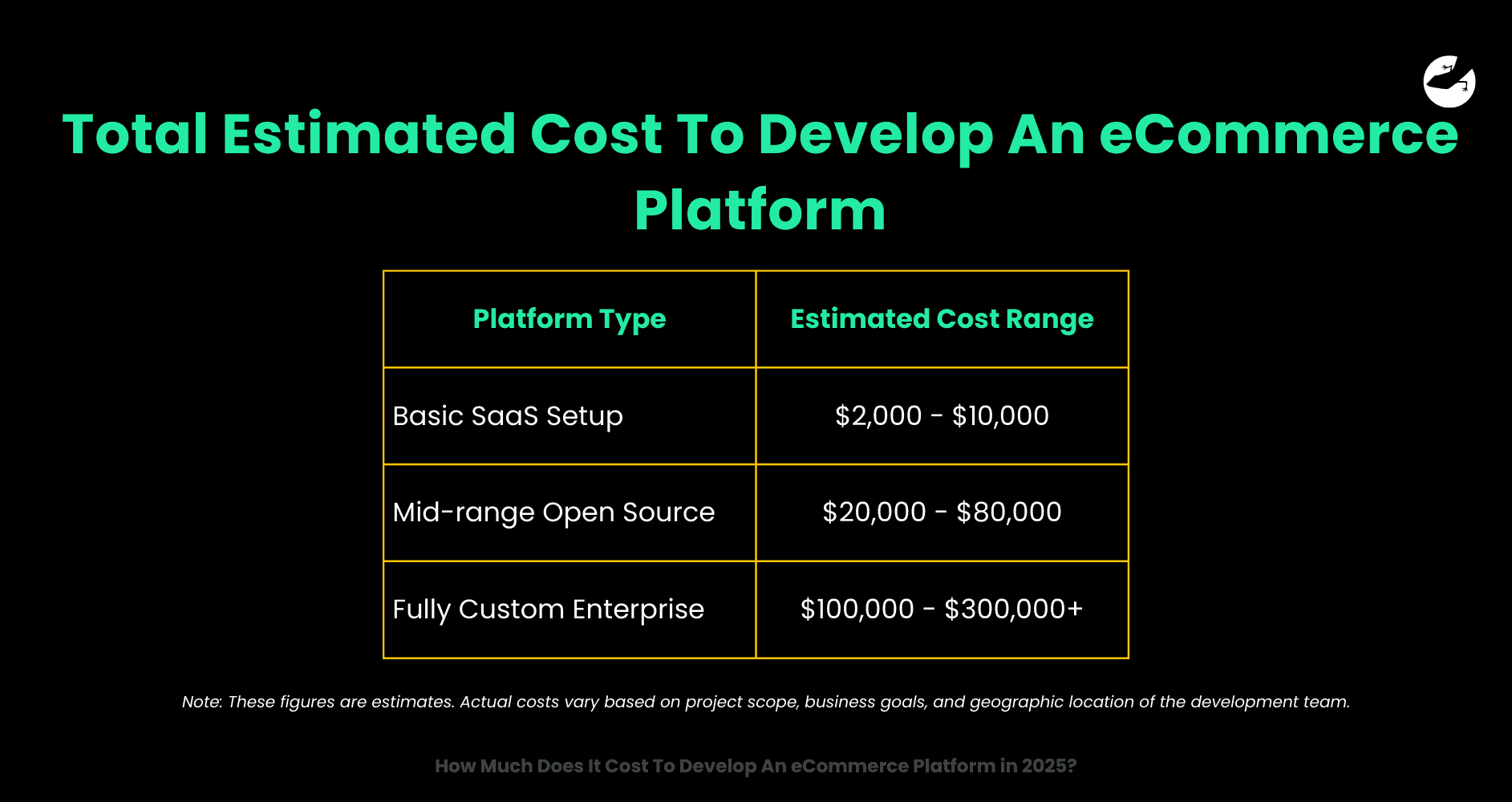
Why Choose Lizard Global for Your eCommerce Development?
At Lizard Global, we specialize in custom software solutions tailored to your business needs. Our expert team of strategists, designers, and developers work closely with you from concept to launch—and beyond.
Here’s what you can expect from partnering with us:
- Digital Strategy First: We don’t just build platforms—we craft digital experiences designed to grow with your business.
- Stunning UI/UX Design: Our award-winning design team ensures your eCommerce platform is as intuitive as it is beautiful.
- Custom Development: Whether it’s a mobile-first store, headless commerce, or ERP integration—we build it your way.
- Security & Scalability: With best-in-class architecture, we ensure your platform is safe, fast, and ready to scale.
- Ongoing Support & Growth: From analytics dashboards to growth hacking features, we’re your long-term digital partner.
Ready to bring your eCommerce vision to life? Let’s connect and make it happen.
Join 2000+ subscribers
Stay in the loop with everything you need to know

How Much Does It Cost To Develop An eCommerce Platform in 2025 A Comprehensive Guide
Thinking about launching an online store? Discover the real cost of eCommerce platform development—broken down by features, complexity, and business needs. Learn what affects your budget and how Lizard Global can help build a scalable, secure, and future-proof solution.
Imagine launching a sleek, high-performing online store that attracts customers, drives sales, and scales effortlessly with your business. Sounds like a dream, right? But turning that dream into a reality starts with a single pressing question: How much does it cost to develop an eCommerce platform?
Whether you're a startup testing the waters or an established brand ready to digitalize your retail experience, understanding the true cost of eCommerce development is crucial. The investment goes far beyond basic web design—think strategy, scalability, integrations, and long-term support.
In this blog, we break down the cost of eCommerce platform development, what influences it, and how to make the most of your budget with the right development partner.
What Factors Influence the Cost of eCommerce Platform Development?
Building an eCommerce platform is not a one-size-fits-all endeavor. The cost varies significantly based on the type of platform, required functionality, integrations, and long-term goals. From a simple product catalog to a fully custom, AI-powered marketplace, your choices will shape your budget.
Several elements impact the cost of developing an eCommerce platform. Let’s dive into the key factors:
1. Type of eCommerce Platform

- Custom-built platforms: These are tailor-made to your business needs and offer full flexibility, scalability, and integration. Perfect for complex operations or unique business models.
Estimated cost: $30,000 – $200,000+
- Open-source platforms: Options like Magento allow customization but require experienced developers.
Estimated cost: $10,000 – $80,000
- SaaS-based platforms: Saleor is great for quick launches but may have limitations on flexibility and ownership.
Estimated cost: $2,000 – $20,000 (initial setup)
For example, launching a basic Saleor-powered store for a boutique might cost just a few thousand dollars, while building a custom enterprise-level marketplace like Zalando or ASOS could run into hundreds of thousands.
2. Design Complexity and UI/UX
Your platform’s design is the digital face of your brand. It influences not only how your brand is perceived but also how users interact with it. A seamless, intuitive user experience (UX) backed by compelling visual design (UI) increases conversions—and development cost.

Designing a custom interface involves wireframing, prototyping, user testing, and responsiveness across devices. Costs increase when your brand requires highly tailored visuals, animations, or complex user journeys.
A well-designed interface with smooth navigation directly influences conversion rates. The more customized the design, the higher the cost.
- Basic themes: Minimal customization, ideal for MVPs or testing the market.
- Custom design: Built from scratch with branding, animations, and optimized flows.
Estimated cost: $5,000 – $50,000
For example, Nike's online store is a great case of top-tier UI and UX. Their site features micro-interactions, dynamic product displays, and localized interfaces—all of which require advanced front-end development and testing.
3. Features and Functionalities
The heart of your eCommerce platform lies in what it can do. The more functionality you require, the more time and expertise it takes to build and maintain—directly affecting your development budget.

Essential features like shopping carts, product filters, and payment gateways are just the start. Advanced features such as dynamic pricing, AI recommendations, product bundling, or subscription models add both value and cost.
The functionality you include will drastically influence the final budget. Some common (and essential) features are:
- Product catalogs and filtering
- Shopping cart and checkout systems
- Payment gateway integrations
- User account management
- Inventory management
- Analytics and reporting
- Multilingual/multicurrency support
More advanced features like AI-powered recommendations, live chat, loyalty programs, or headless commerce architectures add to the cost.
- Basic feature set: $10,000 – $30,000
Advanced functionalities cost: $50,000 – $150,000+
Common AI Features That Impact Cost:
- Advanced search and filtering (faceted search)
- AI-powered product recommendations
- Live chat or chatbot integration
- Custom checkout flows and payment options
- Loyalty and rewards programs
- Multi-language and multi-currency support
- Product reviews and user-generated content
A good example is Amazon, which uses machine learning to deliver personalized product recommendations, real-time inventory updates, and predictive shipping—features that require complex back-end logic, data infrastructure, and APIs.
4. Backend Infrastructure and Scalability

Your eCommerce backend is where the heavy lifting happens—managing products, users, orders, and data. A strong, scalable backend ensures your site performs well even under high traffic and future growth.
If you’re starting small, a basic database and single-server setup might suffice. But if you’re planning to grow or handle high volumes of transactions (e.g. Black Friday sales), you'll need a scalable infrastructure—possibly powered by AWS, Google Cloud, or Azure—with microservices, containerization (like Docker), and load balancing.
Your platform’s backend must support seamless performance as you scale. This includes:
- Database optimization (e.g., PostgreSQL, MongoDB)
- API and third-party service integrations (e.g., ERP, CRM)
- Real-time syncing and order tracking
- Cloud hosting and content delivery networks (CDNs)
- Caching mechanisms and queuing systems for speed
Estimated cost: $15,000 – $100,000+
An example is Saleor, which offers scalable backend infrastructure built on modern architecture, enabling high-growth brands to handle traffic spikes and flash sales with speed and stability.
5. Mobile Responsiveness and App Integration

Over 60% of eCommerce traffic comes from mobile devices. Ensuring a responsive, optimized mobile experience—or building a dedicated mobile app—can make or break your sales funnel.
Responsive design is now expected, but a mobile-first approach or app integration (native or cross-platform) increases development costs. If your business model benefits from on-the-go usage—like Zalora’s fashion shopping app—you might consider building a standalone mobile app for iOS and Android.
Features like push notifications, one-tap checkout, and offline browsing offer significant user value but require additional development and quality assurance QA time.
Most users browse and shop on mobile devices. Optimizing for mobile or building a dedicated mobile app boosts engagement and conversions.
- Mobile-Responsive Web Design
This is the most basic and essential mobile solution. A mobile-responsive website adjusts its layout and functionality based on screen size, ensuring a smooth experience across mobile, tablet, and desktop. It’s typically the most cost-effective option, with estimated costs ranging from $1,000 to $5,000, depending on your site’s complexity and the design approach.
- Progressive Web App (PWA)
A PWA delivers an app-like experience through a standard mobile browser. Users can access your platform offline, receive push notifications, and even "install" it on their home screen—without downloading anything from an app store. PWAs offer great value for mid-tier eCommerce platforms, with costs usually falling between $5,000 and $20,000.
- Native Apps for iOS and Android
Native mobile apps are developed separately for each operating system—using Swift for iOS and Kotlin for Android. These apps provide the best performance, access to all device features (like camera, GPS, biometrics), and a premium user experience. However, they require double the development effort, with typical costs ranging from $40,000 to $150,000 or more, especially for complex eCommerce features.
- Cross-Platform Apps (Flutter or React Native)
Cross-platform development allows you to build one app that runs on both iOS and Android using a single codebase. Tools like Flutter or React Native can significantly reduce development time and costs while still offering excellent performance. This approach is ideal for businesses seeking faster time-to-market, with estimated costs from $25,000 to $100,000.
6. Security and Compliance
Security is a non-negotiable component of eCommerce development. With sensitive data like customer addresses and payment info being exchanged, compliance and protection measures are essential—not optional.

Ensuring GDPR, PDPA, PCI-DSS, and local privacy laws compliance is critical. You'll also need SSL encryption, data anonymization, and secure payment integration. High-risk businesses (like those handling recurring billing or cross-border sales) may need tokenization, multi-factor authentication (MFA), and fraud detection systems.
That Impact Cost:
- SSL certificates and HTTPS setup
- GDPR and CCPA compliance (cookie banners, data rights)
- PCI-DSS compliant payment processing
- Role-based access control for staff
- Routine security audits and penetration testing
Estimated cost: $5,000 – $20,000+
Think of Stripe and PayPal integrations—they handle the complexity of compliance and fraud detection but require skilled implementation and testing.
7. Ongoing Maintenance and Support
Launching your eCommerce platform is just the beginning. Continuous maintenance ensures your platform stays secure, performs well, and evolves with market demands.

Bugs need fixing, servers require monitoring, and new features need rolling out. Most eCommerce platforms also require periodic updates for dependencies, security patches, and third-party services.
Maintenance Tasks That Add Up:
- Bug fixing and performance tuning
- Updating third-party APIs and integrations
- Hosting/server costs
- Analytics and data monitoring
- Scaling infrastructure during growth phases
- Customer support system enhancements
Monthly maintenance cost: $1,000 – $10,000 depending on complexity
Saleor merchants
, for instance, benefit from a modern, API-first architecture that allows for streamlined updates and integrations. However, custom-built implementations still require proactive maintenance—especially as your product catalog expands or your user base scales.
Want to find out how much it costs to build your dream app or web app?
How Can You Optimize Your Budget Without Sacrificing Quality?
Not every project needs a massive investment from day one. There are smart ways to manage costs while still building a reliable, conversion-optimized eCommerce platform.

Start by defining a clear Minimum Viable Product (MVP)—focus on core features that meet user needs and validate your business idea. Avoid overbuilding, and instead plan for future iterations using user feedback. Work with a development partner that practices agile methodology, so you can adjust and prioritize based on performance data.
- Start with an MVP: Launch with core features, then scale based on customer feedback.
- Prioritize UX: A simple, user-friendly design converts better than a flashy one.
- Choose the right tech partner: A skilled development team will help you avoid costly mistakes and future-proof your platform.
- Integrate smartly: Use APIs to connect with existing tools instead of reinventing the wheel.
- Plan for the long term: Build for scalability, not just for today’s needs.
A great example is Drinkies, developed by Lizard Global, which launched its eCommerce MVP with a simple product line and grew based on customer feedback—keeping development lean while maintaining quality.

Why Choose Lizard Global for Your eCommerce Development?
At Lizard Global, we specialize in custom software solutions tailored to your business needs. Our expert team of strategists, designers, and developers work closely with you from concept to launch—and beyond.
Here’s what you can expect from partnering with us:
- Digital Strategy First: We don’t just build platforms—we craft digital experiences designed to grow with your business.
- Stunning UI/UX Design: Our award-winning design team ensures your eCommerce platform is as intuitive as it is beautiful.
- Custom Development: Whether it’s a mobile-first store, headless commerce, or ERP integration—we build it your way.
- Security & Scalability: With best-in-class architecture, we ensure your platform is safe, fast, and ready to scale.
- Ongoing Support & Growth: From analytics dashboards to growth hacking features, we’re your long-term digital partner.
Ready to bring your eCommerce vision to life? Let’s connect and make it happen.
Join 2000+ subscribers
Stay in the loop with everything you need to know
FAQs

How much does it cost to build a mobile app in 2025?
What affects the cost of app development?
How much does it cost to build an MVP (Minimum Viable Product)?
Is it cheaper to build an app with an agency or freelancers?
Can I reduce app development costs without compromising quality?
How do I estimate the cost of my app idea?
Do app development costs include post-launch maintenance?
similar reads

